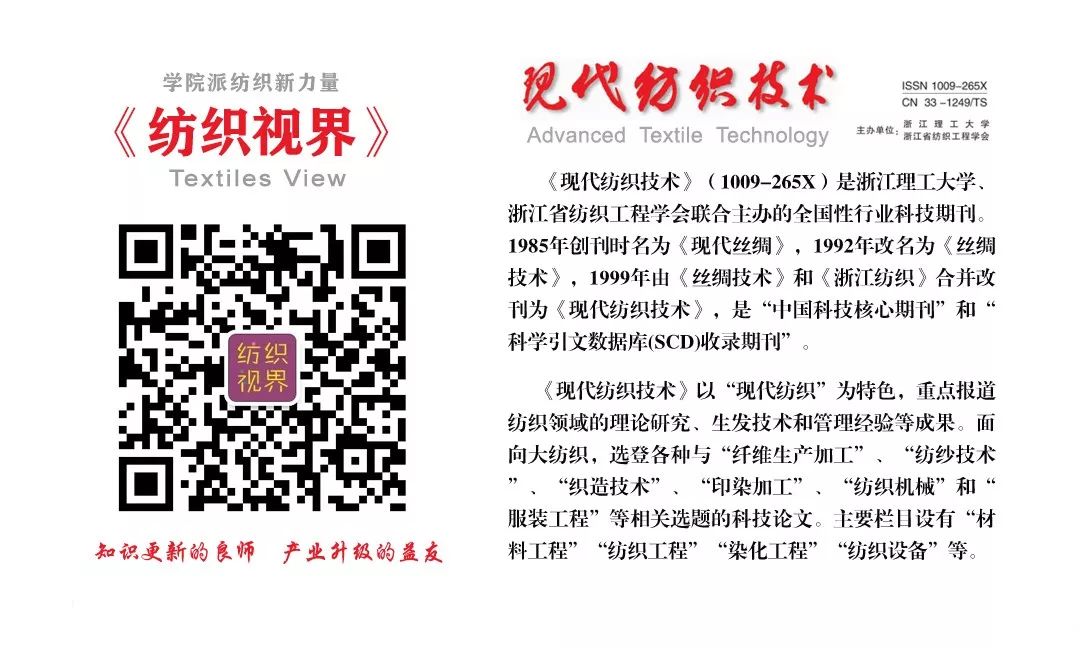Article Number | 1009-265X(2021)03-0065-06
Source | “Modern Textile Technology” Issue 3, 2021, 65-70
Authors | Jiang Maoxin a, Lu Hong b, Huang Wanrong a, Li Xinxin a
(Donghua University, a. College of Fashion and Art Design; b. Key Laboratory of Modern Clothing Design and Technology, Ministry of Education, Shanghai)
Author Introduction | Jiang Maoxin (1997-), female, from Shanghai, undergraduate student majoring in Clothing Design and Engineering since 2016.
Abstract The number of pets globally is increasing rapidly every year, and pet owners’ demand for the style and functionality of pet clothing is gradually rising. Ensuring the safety of pets has become a core demand for pet owners. To ensure the safety of dog owners while walking their dogs at night, functional requirements for smart night clothes for dogs were determined through market research, questionnaires, and in-depth interviews. Combined with the FEA model, a design plan that meets user needs was summarized. The special functions of the dog night clothes were realized through the LilyPad Arduino module. Based on modifications to the sample garment, the final design plan was determined, and a sample garment was made for evaluation. The research demonstrates the creativity of LilyPad Arduino in the application of smart wearable clothing and meets the innovative demand for new types of pet clothing in the market.
Keywords Smart Night Clothes for Dogs; Safety Warning; LilyPad; Arduino; Wearable Technology
The global pet market is developing rapidly, with many countries increasing spending on pet purchases. Pet clothing holds a significant position in the pet market. The Chinese pet clothing market focuses more on the aesthetics and convenience of pet clothing, with less consideration for safety performance. The safety of pets during outings is a concern for pet owners. However, the range of options for pet night safety devices on the market is limited and inadequate, mainly consisting of reflective leashes, reflective raincoats, LED night lights, LED collars, and beam leashes for walking pets [1]. This research combines the design of dog night clothes with the LilyPad Arduino development board, aiming to develop a smart night outfit for dogs to reduce the likelihood of safety incidents during night walks.
Market Analysis of Smart Night Clothes for Dogs

Market analysis was conducted mainly through offline and online market research, questionnaires distributed both online and in person, and face-to-face in-depth interviews, specifically investigating the market demand and functional requirements for smart night clothes for pets. This questionnaire survey utilized both online distribution and on-site distribution, with on-site respondents being dog owners in Shanghai Tianshan Park. A total of 243 questionnaires were distributed, with 210 valid responses, resulting in a validity rate of 86%. Among the valid responses, there were 104 dog owners and 106 non-dog owners.
1.1 Functional Requirement Analysis of Smart Night Clothes for Dogs
In the questionnaire survey regarding the importance of design factors for smart night clothes for dogs, ease of putting on and taking off was the most important factor considered by residents, with an average ranking of 2.23; followed by comfort, with an average ranking of 2.80; then the presence of smart elements, with an average ranking of 2.99; and finally, washability and aesthetic style, with average rankings of 3.13 and 3.85, respectively. Specific data and curve analysis can be seen in Figure 1.
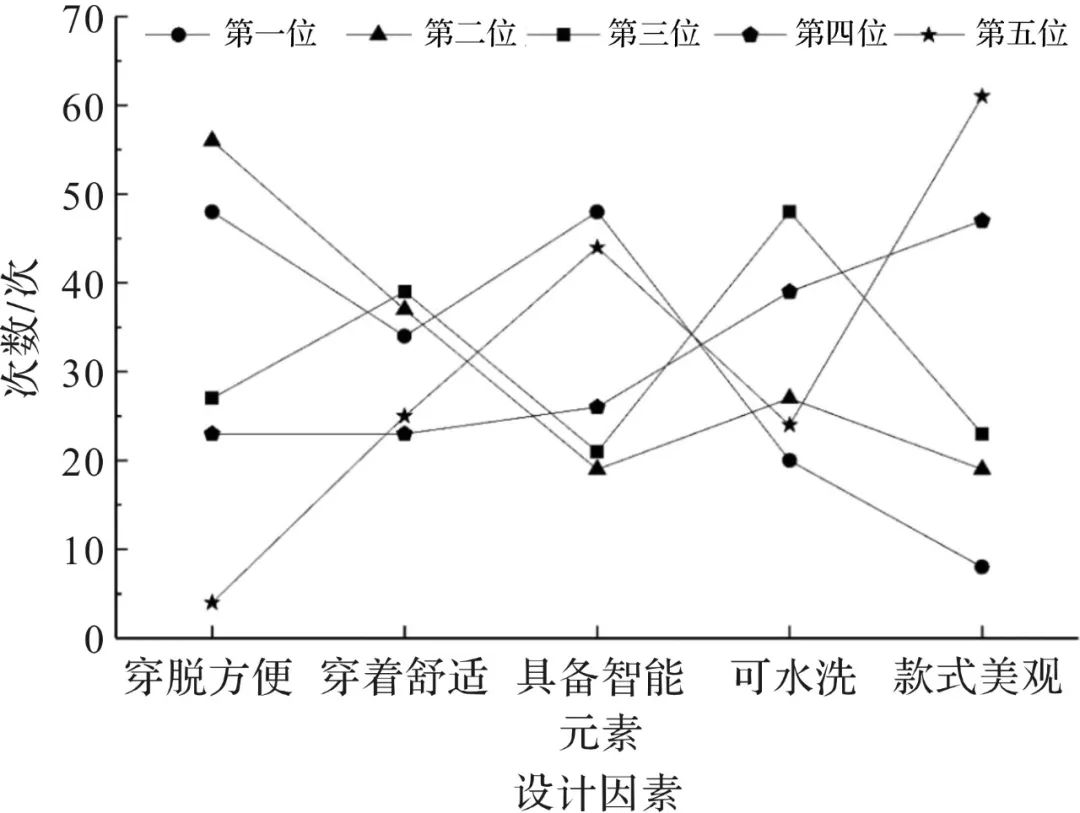
Figure 1 Importance Ranking Analysis of Design Factors for Smart Night Clothes for Pets
1.2 Style Analysis of Dog Clothing
On the Taobao e-commerce platform, the top 10 pet clothing stores were selected for investigation based on monthly sales (March 2019) in descending order. As shown in Figure 2, the styles of dog clothing were summarized into four categories: short-sleeve vest style, sleeveless vest style, four-legged short-sleeve style, and four-legged sleeveless style. According to the questionnaire survey, 64% of dog owners preferred the sleeveless vest style. The sleeveless vest style is very convenient to put on and take off, which best meets the core demands of dog owners for the design elements of smart night clothes.
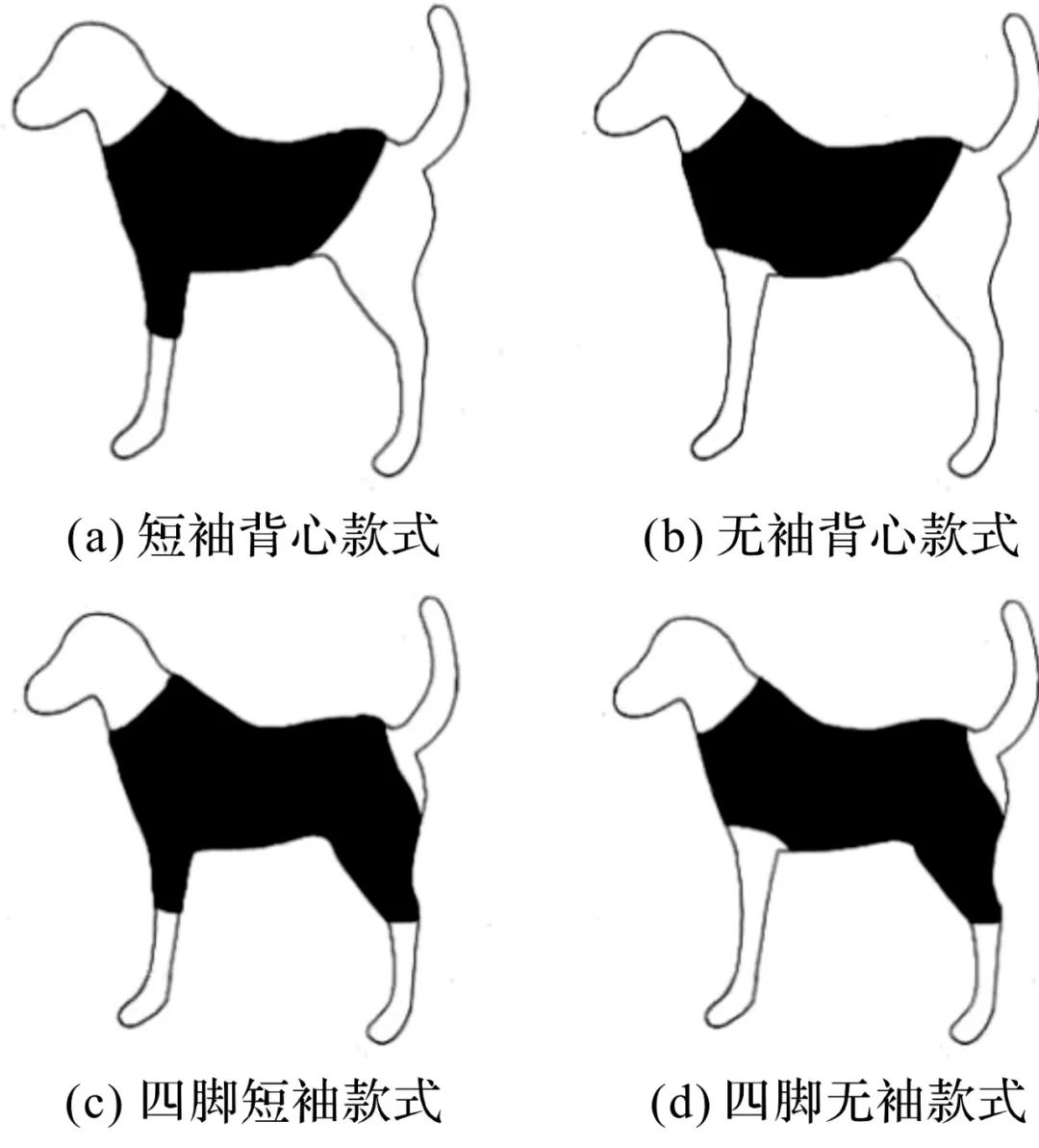
Figure 2 Dog Clothing Styles
1.3 Design Factor Analysis of Smart Night Clothes for Dogs
Regarding the importance of design factors for smart night clothes for dogs, ease of putting on and taking off was the most important factor considered by residents. The survey showed that 46% of dog owners preferred snap closures for easy wear, 29% preferred Velcro, 12% preferred button closures, and only 7% and 6% preferred zipper and buckle closures, respectively. Velcro is convenient for wearing and taking off, but it can easily pull at the dog’s fur [2]. The second most important factor was comfort, mainly reflected in the comfort of the fabric. 65% of dog owners preferred using cotton fabric commonly used in pet clothing, 45% preferred using polyester-cotton fabric similar to warning clothing, while the remaining dog owners preferred waterproof and reflective fabrics. Specific data can be seen in Figure 3.
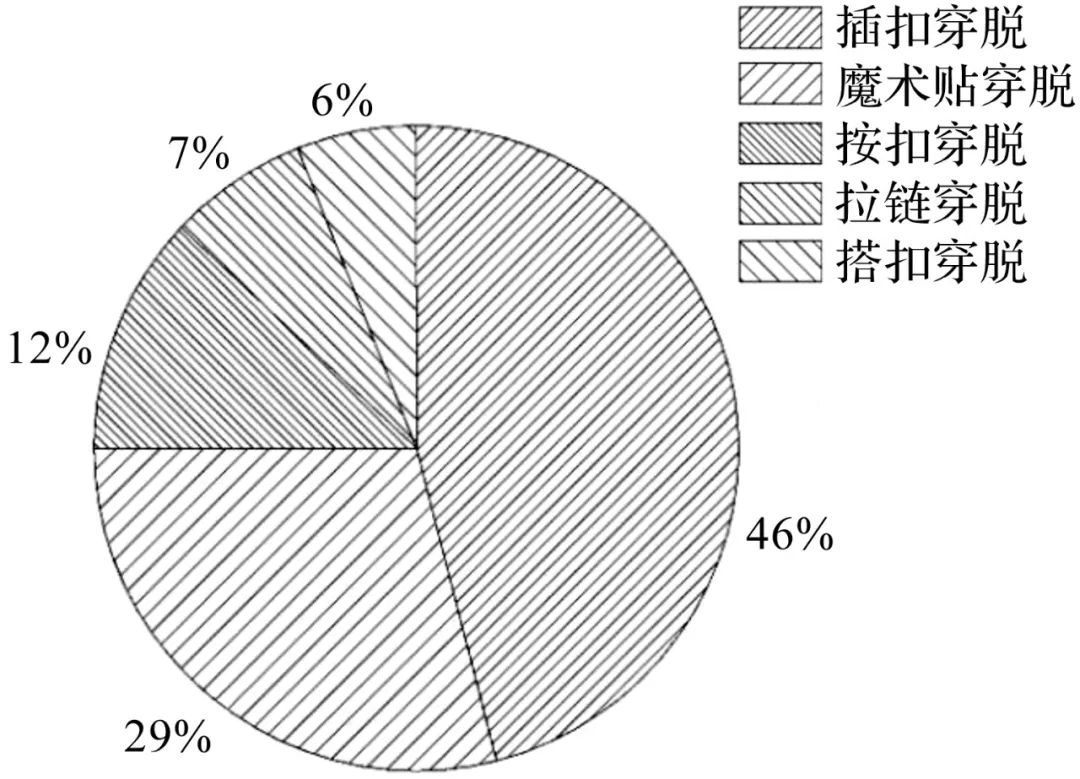
Figure 3 Preference Analysis of Dog Clothing Wearing and Taking Off Methods
In terms of lighting functionality, 72% of dog owners hoped that the pet clothing would have both reflective and lighting functions, with the survey showing that back reflection and constant lighting were the most mainstream choices. 48% of dog owners and non-dog owners chose constant lighting as the ideal method for night walking illumination, while 35% preferred a flashing method.
Research and Design of Smart Night Clothes for Dogs

2.1 Style Design
The research and development of smart night clothes for dogs mainly considered the conclusions drawn from the new version of the FEA model [3] and market demand analysis, focusing on three aspects: functionality, aesthetics, and commercial viability. As shown in Figure 4, a sleeveless design combined with adjustable webbing was adopted to enhance the comfort of the pet.
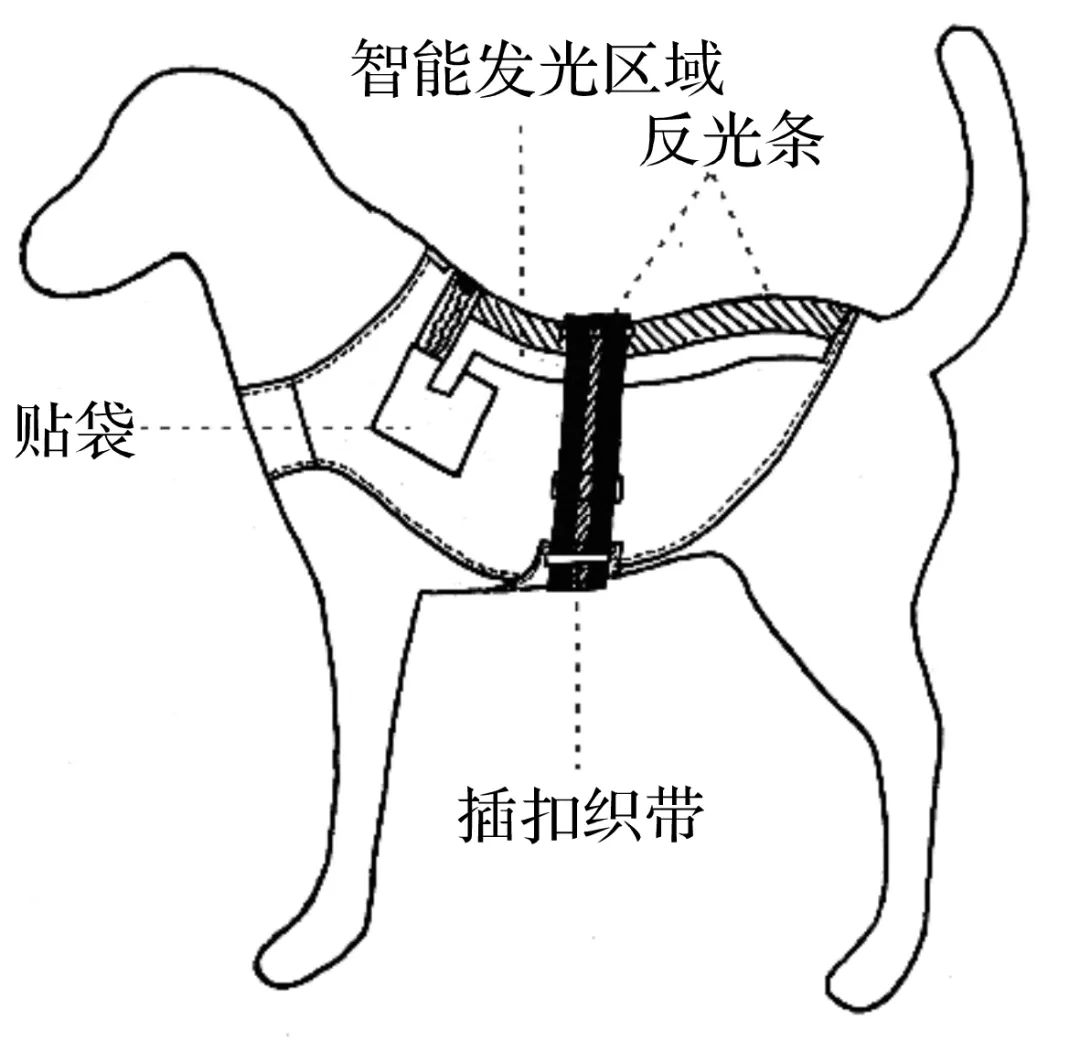
Figure 4 Effect of Smart Night Clothes
The overall smart night clothes for dogs are made of breathable natural cotton fabric to ensure a good experience for the pet. Fluorescent green was chosen as the main color, with black as an auxiliary color to mitigate the impact of the large area of fluorescent green.
Four types of reflective strip fabric options were considered: high-brightness chemical fiber reflective fabric, high-bright polyester-cotton reflective fabric, bright silver polyester-cotton reflective fabric, and high-bright heat transfer reflective tape [4]. Considering both reflective capability and process difficulty, the bright silver polyester-cotton reflective fabric with the best reflective coefficient and higher operability was ultimately selected.
2.2 Functional Design
The smart lighting function of the dog clothing is realized by combining the LilyPad kit with LED color lights. The LilyPad kit is an integrated electronic textile prototype production kit, and the volume of the LilyPad circuit board and sensors, including power supply, is much smaller than that of other Arduino components. Additionally, using conductive thread for connections increases the fabric’s plasticity, allowing for greater design flexibility without the instability and safety concerns associated with powered wires. The sensors used are part of the LilyPad compatible kit, including light sensors, switches, buttons, and LED lights.
2.2.1 Lighting Model Design
From a market promotion perspective, three final options were designed for consumers to choose from: Option 1: LED off in bright light, dimly lit in weak light, and constantly on in darkness; Option 2: LED off in bright light, flashing in darkness; Option 3: LED off in bright light, slowly flashing in weak light, and constantly on in darkness.
2.2.2 LilyPad Arduino Simulation Testing
After multiple simulation tests on the Arduino interface, the statements for flashing and constant lighting functions were debugged. It was found that a flashing frequency of 1000 ms (1 s) was too slow, while a frequency of 500 ms (0.5 s) was visually comfortable. For constant lighting programming, it is sufficient to maintain a high voltage state continuously.
The light sensor is also a key electronic component in this project, able to output analog data ranging from 0 to 5 V based on light intensity. Under sunlight, it outputs a maximum of 5 V; if the light is blocked, it outputs 0 V. The light value is derived from the sensor detecting light intensity, converted into voltage, and then generated as a light value. The light value can be viewed through the serial monitor, so serial communication must be initialized in the environment settings, with the baud rate set to 9600. Subsequently, the corresponding light values can be tested under different lighting conditions, and the sensitivity of the light sensor can be evaluated. For example, if the light value is set to 50, and the surrounding light intensity is lower than 50, the red LED will flash; otherwise, it will turn off.
2.3 Process Design
In the design of pet clothing structures abroad, reference was mainly made to the prototype structures designed by Jung et al. in 2006 [5] and the optimized prototype structures by Kim et al. in 2010 [6]. Based on previous research, the body characteristics of dogs were maximized, and the values for each part were quantified based on chest circumference to facilitate use according to the size of the dog [7]. The advantage of this type of pattern structure is that various sizes of dogs can calculate and produce structural patterns based on their own dimensions. The structure of the smart night clothes for pets needs to be designed based on the common body structure of dogs and their activities and habits during night walks [8]. The variation in styles is actually similar to human clothing patterns. Figure 5 shows the night clothes style and structure diagram completed after multiple modifications based on draping the sample garment.
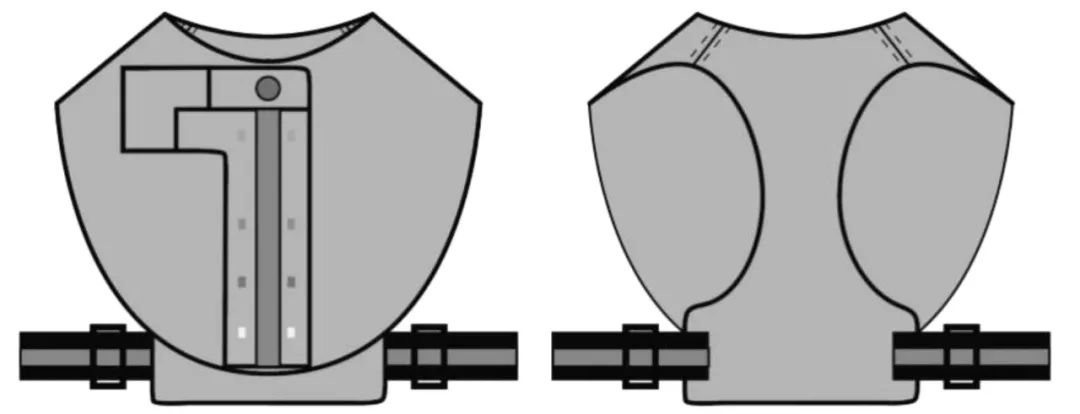
Figure 5 Style of Night Clothes
2.3.1 LilyPad Splicing and Overall Structure Design
The challenge in the structure and process design of smart night clothes for dogs is how to create a detachable relationship between the fabric containing LilyPad and the finished garment. Since the light sensor must be exposed to light directly to be sensitive, it is necessary to consider that the light sensor part must be exposed. Ultimately, the optimal design method is to use patches, pockets, and inserts to make the fabric containing LilyPad detachable. Determining the positions of patches, inserts, and pockets is also an extremely important area of research. The final structure diagram and dimensions of the night clothes are shown in Figure 6.

Figure 6 Structure of Night Clothes
2.3.2 LilyPad Sewing Process Design
In addition to programming design, another challenge in wearable smart clothing is the sewing process design, which mainly includes the design of the overall circuit diagram of LilyPad, the sewing process of LilyPad onto the fabric, and ensuring the insulation design of conductive threads.
The circuit diagram is designed after disassembling the electronic components, based on the structure diagram, as shown in Figure 7.
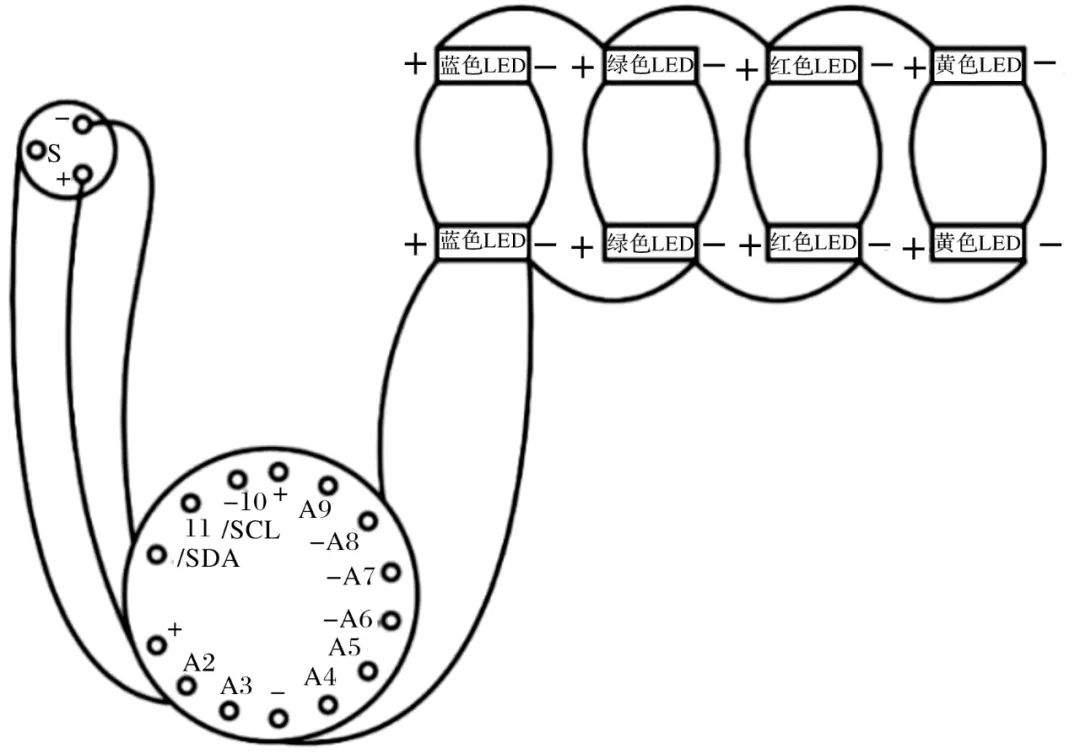
Figure 7 LilyPad Circuit
The sewing of LilyPad is more complex than that of ordinary garments. To ensure good contact between conductive threads and interfaces, 3 to 4 loops should be made when sewing at the interface. For the overall aesthetics of the circuit, the stitches are generally evenly spaced and not overlapping. Some designs expose the entire circuit, in which case the front stitches can be shorter than the back stitches for a hidden effect. If the entire circuit is in a conductive state, the stitching should be continuous. The difficulty of the sewing process lies in how to sew the simplified circuit design onto real fabric while ensuring correct conductivity and maintaining consistent and orderly stitching. Care must be taken to prevent short circuits during sewing.
Regarding the insulation design of conductive threads, special attention is needed for the insulation of power and ground wires to avoid battery short circuits. Insulation stitching can prevent potential short circuits caused by movement, folding, or contact with conductive surfaces, as well as provide an additional barrier during wear or cleaning. There are five insulation techniques for electronic textiles [9] to choose from: elastic fabric glue, fabric paint, fabric layers/linings, embroidery/decorative stitching. Considering the difficulty of the process and drying solidification time, embroidery was ultimately chosen as the insulation technique for its aesthetic and practical production qualities, as it can directly wrap both sides of the stitching.
The finished garment utilizes fluorescent green cotton fabric and black edging strips for splicing, with the smart lighting effect shown in Figure 8(a), meeting the safety warning requirements. The LilyPad was placed on the side to accommodate the pet’s movement habits, and it was hand-sewn neatly onto the fabric to ensure the circuit operates smoothly, as shown in Figure 8(b), followed by insulation treatment for the conductive threads, as shown in Figure 8(c).

Figure 8 Physical Sample of Night Clothes Insert
Testing and Design of Smart Night Clothes for Dogs

3.1 Wear Testing
The smart night clothes for dogs were tested in the dark, under simulated streetlights, and under light exposure.
In the dark, the lighting effect of the night clothes is quite noticeable, as shown in Figure 9(a), but it is not blinding. The movement trajectory of the dog can be clearly perceived due to the streamlined lighting design, which makes it easier to detect the dog’s position and intended movement state.
Under simulated streetlight conditions, the reflective ability of the night clothes is not strong, as shown in Figure 9(b), because the light does not directly hit the reflective strip. However, the LED lighting can compensate for the weakness of the reflective ability, allowing the dog’s direction to be clearly distinguished within the visible range.
Under simulated lighting conditions, the reflective degree of the night clothes is extremely high, as shown in Figure 9(c), allowing for clear identification of moving objects ahead, thus better protecting the safety of both the dog and the owner. The LED lighting effect is weaker under strong light conditions, but the reflective strips compensate for the weak luminous effect caused by excessive surrounding light.

Figure 9 Wearing Effect Under Simulated Light Conditions
3.2 Wear Evaluation
In the evaluation, respondents could experience the finished garment and simulate wearing and taking off. Subjective scoring was based on product satisfaction, rated from 1 to 5, with 1 indicating dissatisfaction and 5 indicating high satisfaction. Attention was given to product importance, also rated from 1 to 5, with 1 indicating unimportance and 5 indicating high importance. Specific data can be seen in Table 1.
Table 1 Subjective Evaluation Records
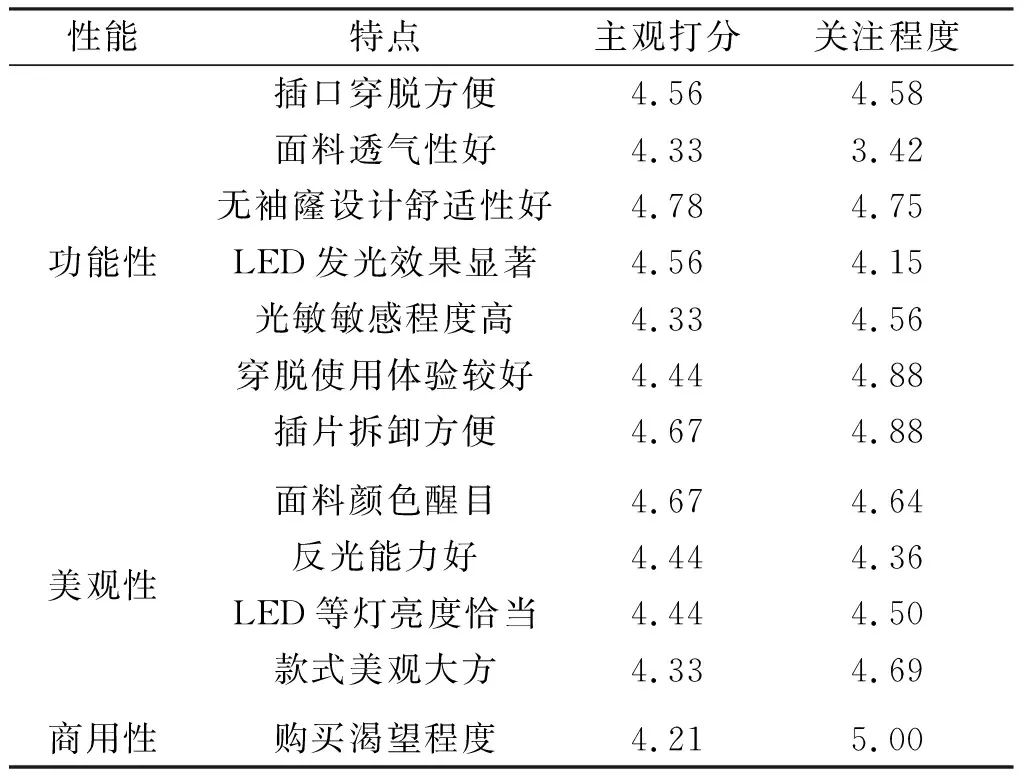
The majority of the target audience placed the highest importance on the commercial viability of the night clothes, followed by aesthetics, and finally functionality. The functionality of this garment meets the respondents’ attention, while there is still room for improvement in aesthetics and commercial viability.
In terms of functionality, the sleeveless design received the highest satisfaction, and the convenience of snap closures was also recognized by respondents after testing. Respondents suggested adjusting the thickness of the fabric according to the season; the comfort of the neck structure also needs improvement; and using slightly thicker fabric for the inserts would make them easier to detach. The LED lighting effect, light sensitivity, and wearing experience were all satisfactory to the respondents. Most dog owners believe that wearing this smart night outfit for dogs can effectively ensure the safety of pets during night walks.
In terms of aesthetics, respondents unanimously agreed that the fabric color is eye-catching, the LED brightness is appropriate, and the reflective ability is good. Respondents suggested maintaining consistent lamp colors during commercial production and adding a D-ring for attaching leashes. Regarding commercial viability, respondents hoped for a price below 200 RMB. Currently, the LilyPad USB Plus is priced at $25.95, the light sensor at $3.5, and 5 LED lights at $2.95. After implementing market promotion, costs can be controlled within 250 RMB. Respondents also expressed a desire for multiple purchasing channels both online and offline.
Conclusion

After dark, visibility is low, making it easy for accidents to occur. Therefore, it is necessary to create night clothes for dogs that are easy for drivers, cyclists, and pedestrians to distinguish, in order to reduce the likelihood of safety incidents during night walks. This smart night outfit for dogs not only ensures the mutual safety of dog owners during night walks but also meets the innovative demand for new types of clothing in the pet clothing market. In the future, it could lead to the development of other specialized clothing for pets, such as GPS and smart light-sensitive clothing for search and rescue dogs. Utilizing smart elements can tap into the potential market in the pet industry, and this night outfit holds significant potential value.
References
[1] Yang Xuetao. Research on the Development of New Pet Clothing [D]. Wuxi: Jiangnan University, 2008: 13-14.
[2] Weifeng. How to Choose Suitable Clothing for Your Dog [J]. Shanxi Elderly, 2013(3): 42-42.
[3] STOKES B, BLACK C. Application of the functional, expressive and aesthetic consumer needs model: assessing the clothing needs of adolescent girls with disabilities [J]. International Journal of Fashion Design, Technology and Education, 2012, 5(3): 179-186.
[4] Li Yuntai. High Brightness Clothing Accessories [J]. Journal of Zhejiang Textile and Garment Vocational Technology College, 2004, 3(2): 20-22.
[5] Jung H, Moon M. A study on the development on the basic pattern for pet dog’s wear [J]. Journal of Korean Society for Clothing Industry, 2006, 8(1): 99-106.
[6] Kim J, Park S. The prototype development of clothing for pet dogs [J]. The Research Journal of the Costume Culture, 2010, 18(4): 599-611.
[7] Lee J. A study on the development of pattern and design for pet dog’s wear [J]. Journal of Korean Society for Clothing Industry, 2012, 14(5): 846-852.
[8] Wang Shanshan. Brief Discussion on the Structural Design and Key Points of Pet Dog Clothing Patterns [J]. Modern Vocational Education, 2017(24): 58-59.
[9] Sparkfun. Insulation Techniques for e-Textiles [OL]. 2019 [2019-5-1]. https://learn.sparkfun.com/tutorials/insulation-techniques-for-e-textiles.
[10] Zhang Wanjun, Zhu Yanfei, Shao Jing. Research on Pet Safety in Beijing Residential Areas [J]. Modern Business Industry, 2010(18): 258-259.
Published | New Media Center of Zhejiang Sci-Tech University Journal
Editor | Xu Hang
